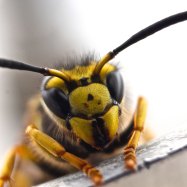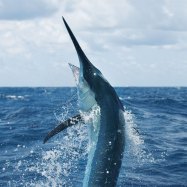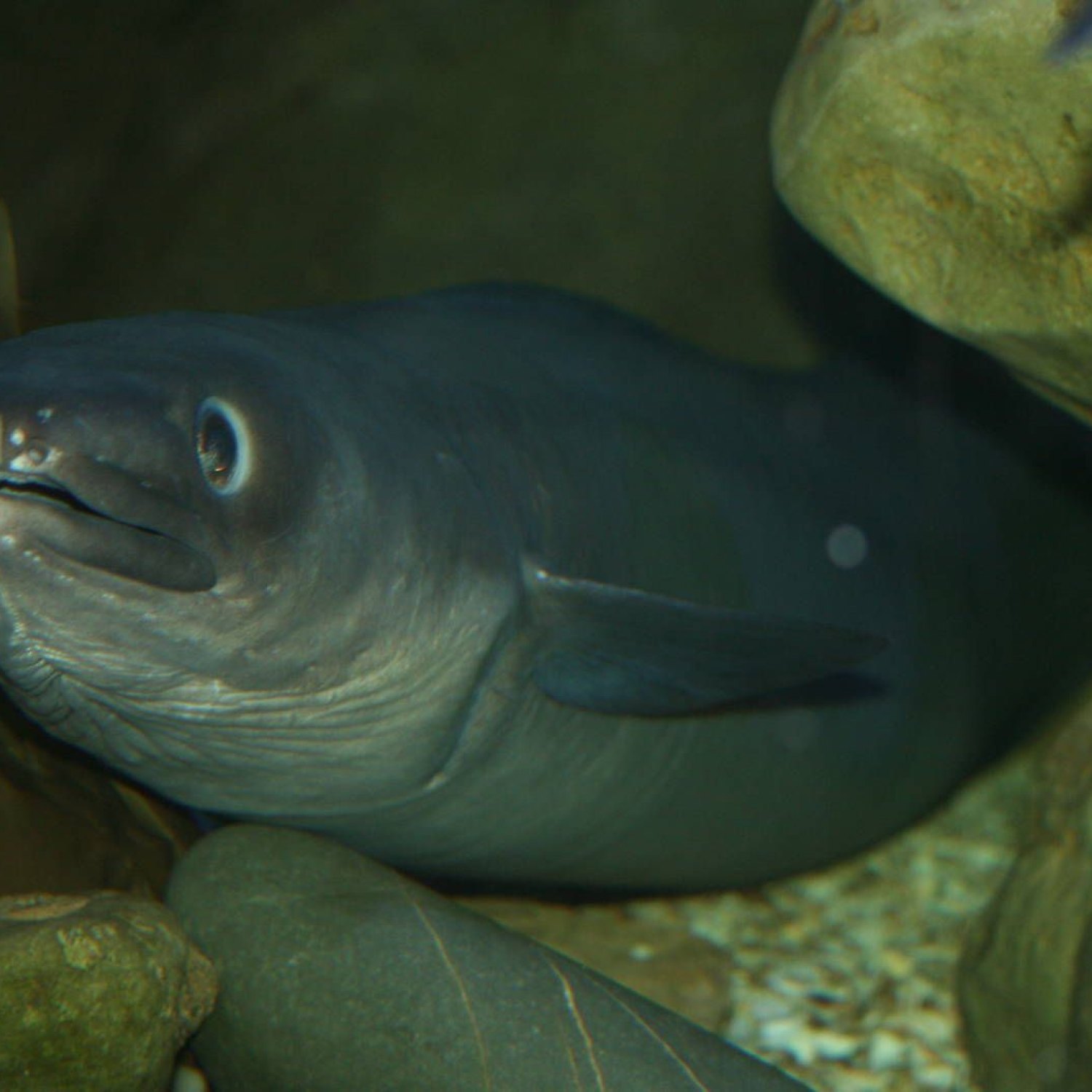
Conger Eel
Up to 3 meters (9.8 feet)
The Conger Eel, found in coastal waters, can grow up to 3 meters long and belongs to the Congridae family. Its body shape is elongated and snake-like, making it a skilled predator and a sight to behold in the ocean. #CongerEel #MarineLife #CoastalWaters #AnimalFacts
Animal Details Summary:
Common Name: Conger Eel
Kingdom: Animalia
Habitat: Marine
Welcome to the Mysterious World of the Conger Eel
The deep, dark depths of the ocean hold countless secrets and mysteries. One such enigmatic creature that resides in these unexplored waters is the Conger Eel (Conger conger). Despite its fearsome appearance, this creature has captured the imagination of many, and it's time to unravel its secrets.As the name suggests, the Conger Eel belongs to the family Congridae and is known for its long, snake-like body shape Conger Eel. It is a member of the Animalia kingdom, Chordata phylum, and Actinopterygii class. Within the Anguilliformes order, it holds a special place as one of the largest and longest species.
This elusive creature is found in the Eastern Atlantic Ocean, primarily in the coastal waters of Portugal. Its distribution has also been recorded in the Mediterranean Sea, and its presence has been reported as far as the Indian Ocean. Its habitat is limited to marine environments, where it can be found hiding in dark crevices and caves, waiting for its next meal.
Speaking of meals, the Conger Eel has a carnivorous feeding method. Its diet consists of a variety of prey, including fish, crustaceans, and mollusks. With its sharp teeth and strong jaws, it can easily capture its prey and swallow it whole. This formidable predator is an essential part of the ocean's food chain and plays a significant role in maintaining the balance of its ecosystem Carpenter Ant.
One of the most striking features of the Conger Eel is its coloration. Its back is grayish-brown to black, while its belly is pale. This coloration serves as camouflage, helping them blend in with their dark surroundings. Thus, making them challenging to spot in the murky depths of the ocean, adding to their mysterious nature.
The body shape of the Conger Eel is what sets it apart from other eels. Its elongated and snake-like form allows it to move swiftly and navigate through tight spaces. It is also equipped with a slender and powerful tail that helps it swim and propel through the water with ease. These unique physical qualities make it a formidable hunter and a skilled escape artist, making it challenging for predators to capture.
The Conger Eel is known to grow up to an impressive length of 3 meters (9.8 feet), making it one of the longest eels in the world. Its size and powerful body make it a force to be reckoned with in the ocean. So, it's best to give these creatures the respect and space they deserve when encountered in their natural habitat.
Now that we have learned a little about the Conger Eel let us dive deeper and discover more about this fascinating creature.
Habitat and Range
The Conger Eel is a marine species, found primarily in the Eastern Atlantic Ocean. Its habitat ranges from Portugal to the Mediterranean Sea and as far as the Indian Ocean. In the Atlantic, it can be found in shallow coastal waters, while in the Mediterranean, it prefers deeper waters. They are also known to inhabit rocky reefs, wreck sites, and underwater caves, where they can hide and hunt for prey.
Feeding Habits and Diet
The Conger Eel has a carnivorous feeding method, which means it feeds on other animals. Its diet consists of a wide range of prey, including fish, crustaceans, mollusks, and sometimes even other eels. This eel is an ambush predator, and its strong jaws and sharp teeth help it capture and swallow its prey whole. Its diet may also vary depending on its size, with larger Conger Eels opting for larger and more substantial meals.
Biology and Anatomy
The Conger Eel is a fascinating creature when it comes to its biology and anatomy. Its body is elongated and has a snake-like appearance, tapering towards the tail. It is equipped with a continuous dorsal and anal fin that helps in propulsion and stability in the water. Its skin is scaleless but has a thick layer of mucus that helps protect it and maintain its slippery texture.
Their eyes are small and located on the head, with a keen sense of smell and touch. This allows them to sense any movement or disturbance in the water and helps them hunt efficiently. The Conger Eel is also equipped with sensory organs called ampullae of Lorenzini, which help them detect electrical fields in the water.
Reproduction and Growth
The reproductive habits of the Conger Eel are still not well understood due to the limited research and study on this species. It is believed that they have a complex lifecycle and migrate to deeper waters for spawning. Female Conger Eels can produce millions of eggs at once, which hatch into larvae and drift with the ocean currents until they reach a suitable habitat. As they grow and mature, they slowly transform into their adult form.
Threats and Conservation
The Conger Eel faces various threats in the wild, primarily due to the destruction of their natural habitat. Overfishing, especially in the Mediterranean, has led to a decline in their population. They are also caught as bycatch in fishing nets, which can lead to their accidental death. However, there are no specific conservation efforts in place for this species due to the lack of data and information.
Interaction with Humans
The Conger Eel is not known to be aggressive towards humans, making it safe to swim and dive in their waters. However, they have been known to attack when provoked or threatened. Their sharp teeth and powerful jaws can cause severe wounds, so it's best to admire them from a safe distance. In many parts of the world, they are also considered a delicacy and are commercially fished.
In Conclusion
The Conger Eel is a mysterious and elusive creature that continues to fascinate researchers and ocean enthusiasts alike. Its unique appearance, behavior, and biology make it a fascinating subject of study. However, due to the lack of research and conservation efforts, much is still unknown about this species. As we continue to explore the wonders of the ocean, let us remember to protect and preserve these magnificent creatures that call it home.

Conger Eel
Animal Details Conger Eel - Scientific Name: Conger conger
- Category: Animals C
- Scientific Name: Conger conger
- Common Name: Conger Eel
- Kingdom: Animalia
- Phylum: Chordata
- Class: Actinopterygii
- Order: Anguilliformes
- Family: Congridae
- Habitat: Marine
- Feeding Method: Carnivorous
- Geographical Distribution: Eastern Atlantic Ocean
- Country of Origin: Portugal
- Location: Coastal waters
- Animal Coloration: Grayish-brown to black on the back, pale on the belly
- Body Shape: Elongated and snake-like
- Length: Up to 3 meters (9.8 feet)
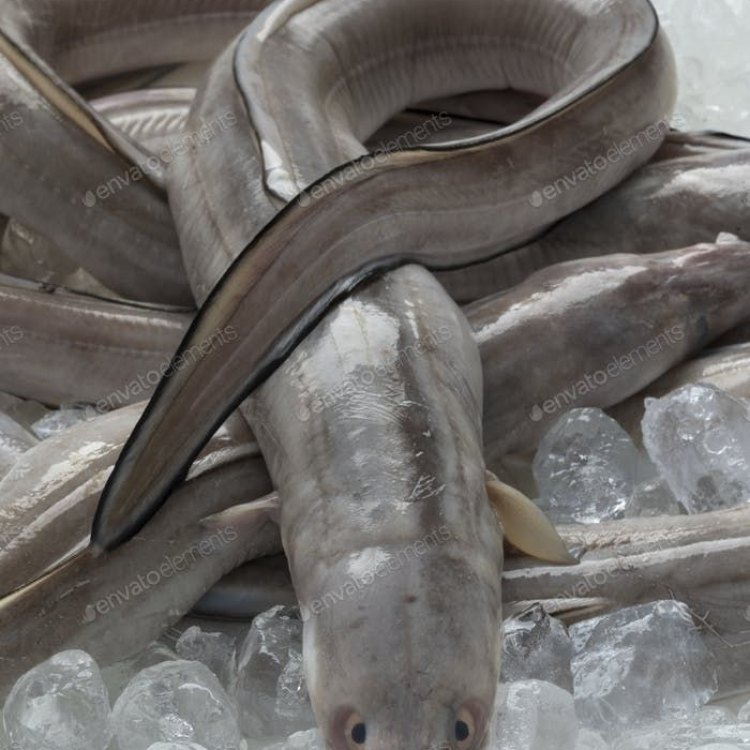
Conger Eel
- Adult Size: Up to 3 meters (9.8 feet)
- Average Lifespan: Approximately 10-20 years
- Reproduction: Sexual
- Reproductive Behavior: Conger eels migrate to deeper waters for spawning
- Sound or Call: Can produce low-frequency sounds
- Migration Pattern: Migratory
- Social Groups: Solitary
- Behavior: Nocturnal
- Threats: Overfishing, habitat destruction
- Conservation Status: Least Concern
- Impact on Ecosystem: Important role as predators in their ecosystem
- Human Use: Commercial fishing, culinary use
- Distinctive Features: Strong jaws with sharp teeth, long dorsal and anal fins
- Interesting Facts: Conger eels are the largest eels in the world
- Predator: Sharks, larger fish
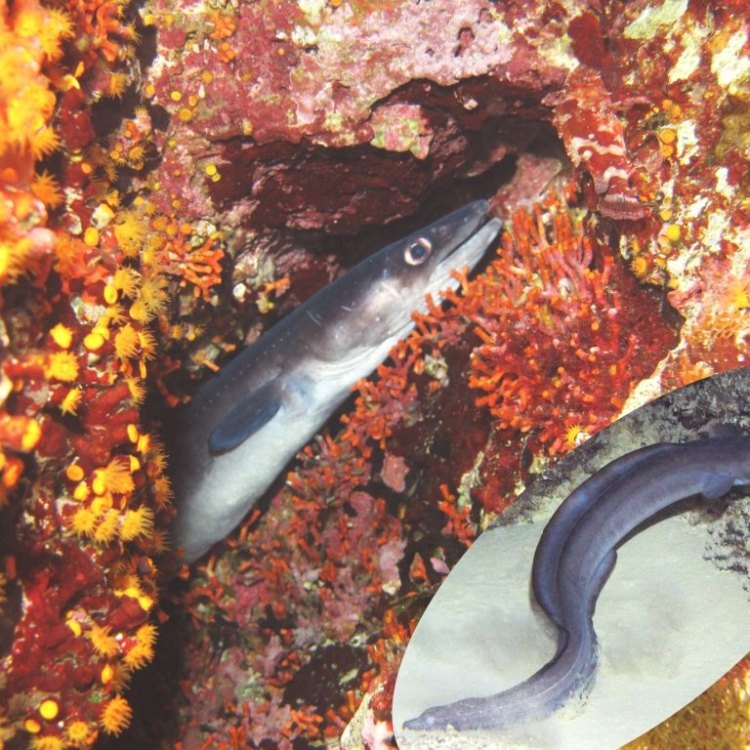
Conger conger
The Mighty Conger Eel: Unsung Heroes of the Sea
The ocean is a vast and mysterious world, filled with creatures that both fascinate and terrify us. Among these creatures is the Conger Eel, a formidable and often misunderstood apex predator. These incredible eels have been a vital part of the ocean's ecosystem for centuries, yet they have been largely overlooked by the general public. In this article, we will dive into the depths of the ocean to discover the unique features and fascinating behavior of the mighty Conger Eel PeaceOfAnimals.Com.The Conger Eel, also known as the European Conger or the European Conger Sea Eel, is one of the largest eel species in the world. They can grow up to 3 meters (9.8 feet) in length and weigh over 110 pounds, making them a force to be reckoned with in the ocean. Despite their impressive size, Conger Eels have an average lifespan of only 10-20 years. These elusive creatures reside in the eastern Atlantic Ocean, from Iceland to Senegal, and the Mediterranean, making them a familiar sight for fishermen and divers alike.
As sexual reproducers, Conger Eels participate in an annual reproductive migration to deeper waters for spawning. During this time, they become more active and visible to humans, making it a prime time for commercial fishing. This behavior has made them vulnerable to overfishing, with populations decreasing in some areas due to this activity.
Conger Eels have an interesting way of communicating with each other, utilizing low-frequency sounds Common Green Magpie. These sounds may serve as a form of communication or warning to other eels, or as a way to attract mates. Though humans cannot hear these sounds, they can be detected by specialized equipment. This unique ability adds to the mystery surrounding these creatures and highlights how little we know about deep-sea life.
Unlike other eel species, Conger Eels are migratory, meaning they move from one location to another periodically. While their exact migration patterns are still a mystery, it is believed that they travel long distances from their breeding grounds to feeding grounds. These migrations play a crucial role in maintaining the balance of the ocean's ecosystem as they transport nutrients and energy throughout different regions.
Conger Eels are solitary creatures, only coming together during the spawning season. This behavior is similar to other apex predators, such as sharks, who also tend to be solitary. As nocturnal creatures, they are most active at night, using their excellent sense of smell to locate prey in dark and murky waters. This behavior also makes them highly elusive and difficult to study in their natural habitat.
Despite being formidable predators, Conger Eels face threats from human activities such as overfishing and habitat destruction. Their strong jaws, lined with sharp teeth, make them a highly sought-after creature in the commercial fishing industry. They are considered a delicacy in many cuisines, and their meat is in high demand, leading to overfishing in some areas. Changes in ocean temperature and pollution also pose a threat to their habitat, further endangering their populations.
Despite these threats, Conger Eels are currently listed as "Least Concern" on the International Union for Conservation of Nature's Red List. This is due to their widespread distribution and relatively stable populations, though conservation efforts are still essential to protect these creatures from potential decline.
The impact of Conger Eels on the ocean's ecosystem cannot be underestimated. As apex predators, they play a crucial role in regulating populations of their prey species. They also help maintain the balance of the food chain and prevent overgrazing by their prey, thereby preserving the health of the ocean's ecosystem. In this way, they are unsung heroes of the sea, contributing to the well-being of the ocean and all its inhabitants.
Humans have been utilizing Conger Eels for centuries, both commercially and culinarily. In some cultures, they are considered a delicacy, often prepared in dishes such as smoked eel or eel pie. They are also used for medicinal purposes in traditional Chinese and Japanese medicine, believed to have healing properties for various ailments.
The unique features of the Conger Eel make it an intriguing creature to study and observe. Its strong jaws, lined with sharp teeth, are a distinctive characteristic that sets it apart from other eel species. These teeth are used to capture and hold onto their prey, sometimes even attacking prey larger than themselves. Conger Eels also have long dorsal and anal fins that help them move gracefully through the water, giving them an elegant appearance despite their fearsome reputation.
As the largest eel species in the world, Conger Eels are often regarded as mysterious and fascinating creatures. However, there are still many interesting facts about them that are lesser-known. For example, they can live in a wide range of temperatures, from 10 to 20 degrees Celsius. They are also known to change colors depending on their environment, from a sandy yellow to a dark brown or purplish-black. Additionally, they have a unique ability to produce a slime-like substance when threatened, which can suffocate predators.
Despite being formidable predators, Conger Eels also have their own predators to watch out for. Sharks and larger fish, such as tuna and swordfish, are known to prey on these eels. However, their elusive nature and sharp teeth make them a challenging target, often able to escape from potential threats.
In conclusion, the Conger Eel is an enigmatic and fascinating creature that deserves more recognition and appreciation for its role in the ocean's ecosystem. From its unique features and interesting behavior to its important role as a predator and prey, these eels play an integral part in maintaining the balance of the sea. As humans continue to explore and learn more about the ocean's depths, it is important to remember and protect the mighty Conger Eel and ensure its survival for future generations to appreciate.
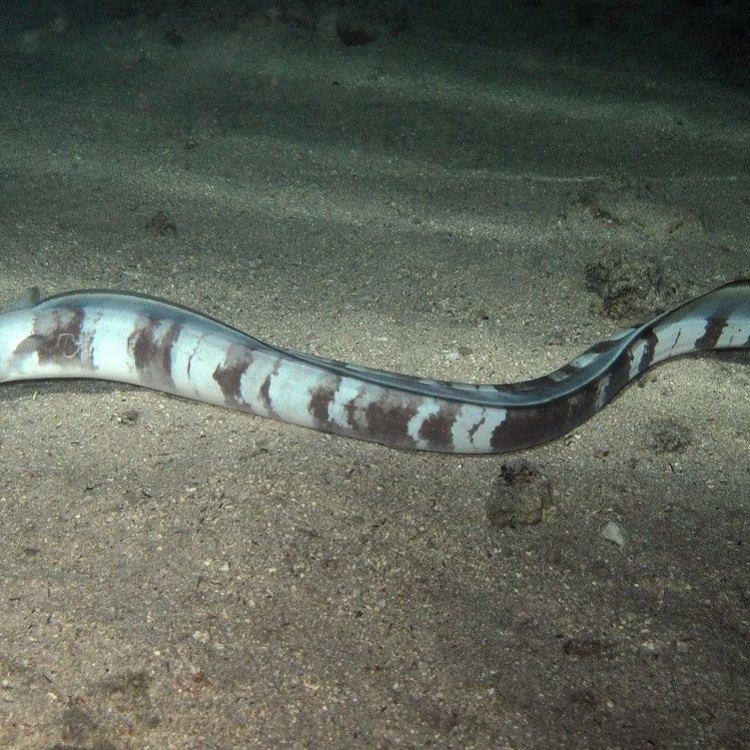
Welcome to the Mysterious World of the Conger Eel
Disclaimer: The content provided is for informational purposes only. We cannot guarantee the accuracy of the information on this page 100%. All information provided here may change without prior notice.




